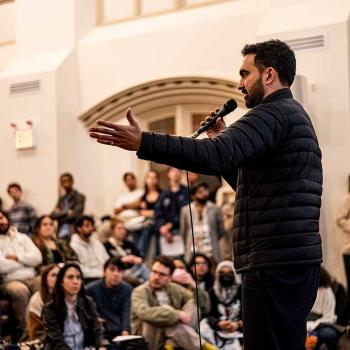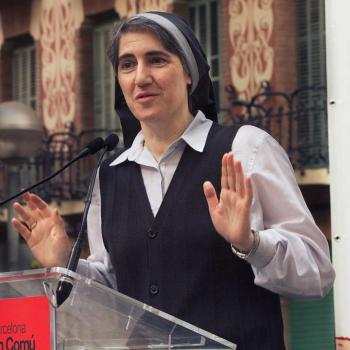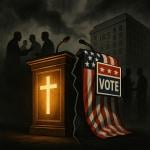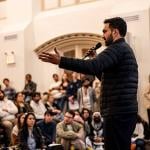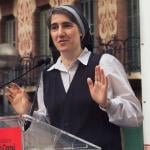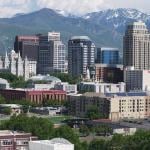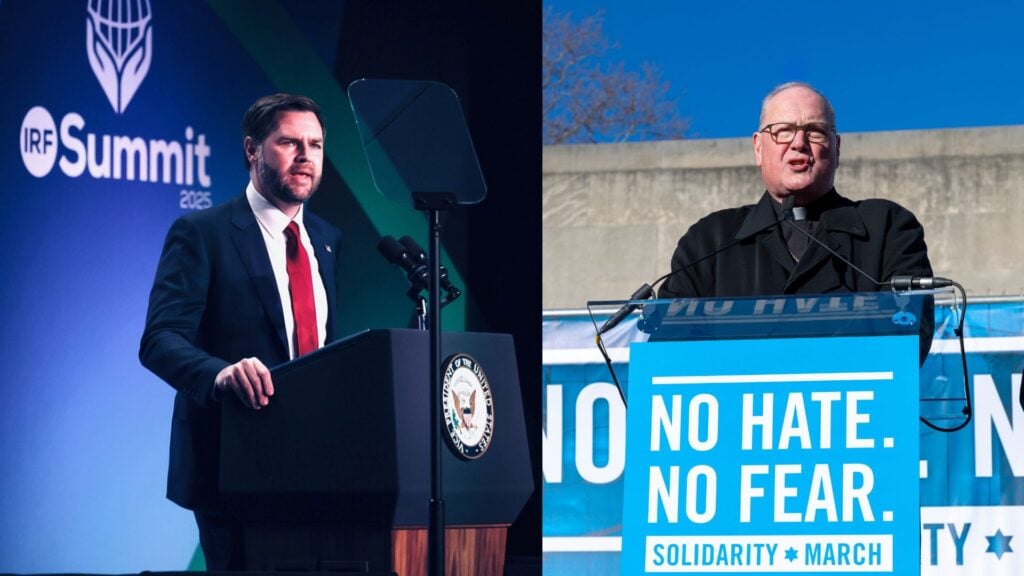
Most of last week I spent in meetings in and around Washington DC where the intermingling of politics and religion was on high display. U.S. Vice President JD Vance spoke at the International Religious Freedom (IRF) Summit and President Donald Trump addressed the National Prayer Breakfast.
I pursued my doctorate in the sociology of religion in part to understand why the relationship between politics and religion is often uneasy. For example, New York Catholic archbishop Cardinal Timothy Dolan gave a featured and warmly received invocation at Donald Trump’s 2025 inauguration. A week later, fellow Catholic, U.S. Vice President JD Vance, leveled criticism against the US Conference of Catholic Bishops.
In a CBS Face the Nation interview, Vance said “… the US Conference of Catholic Bishops needs to actually look in the mirror a little bit and recognize that when they receive over $100 million to help resettle illegal immigrants, are they worried about humanitarian concerns? Or are they actually worried about their bottom line?”
Dolan, on his SiriusXM show (covered by CFN at 6-minute mark), said “I was really disappointed with what he said on ‘Face the Nation’ the other day. And I don’t mind telling you, somewhat hurt. This was not only harmful, this was inaccurate. You heard what he said: ‘Oh, the bishops, they’re pro-immigrant because of the bottom line because they’re making money off this.’ That’s just scurrilous. It’s very nasty, and it’s not true.”
Cardinal Dolan Was ‘Hurt’
Sociologist N.J. (Jay) Demerath, III, gave a most memorable lecture in 1993 exactly on this ‘hurt.’
Demerath looked at the relationship between religion, politics and the government in the U.S. in comparison with Brazil, China, Egypt, Guatemala, India, Indonesia, Israel, Japan, Northern Ireland, Pakistan, Poland, Sweden, Turkey, and Thailand.
After study and travel to each country, Demerath concluded that there was a similarity across all. As a moth is drawn to a flame, religion is drawn to the power and influence of politics and government. And at the same time, politicians are drawn to the power and influence of religion.
His lecture’s title reflects this observation, “The Moth and the Flame: Religion and Power in Comparative Blur.” Interestingly, the lecture was in memory of Monsignor Rev. Paul Hanly Furfey (1896-1992), a fellow sociologist who pioneered the application of modern social sciences alongside a bold application of Catholic Social Teaching.
A few poignant quotes
Demerath’s article and related book (Crossing the Gods: World Religions and Worldly Politics) are worthwhile reads as the two spheres of power continue to be drawn to and at times burned by each other.
I’ll conclude with a few poignant quotes from Demerath’s The Moth and the Flame:
“Meanwhile, just as political figures must calculate their relation to religion, so must religious leaders calculate their relation to government. I have argued elsewhere that ‘religion’s capital is frequently maximized when it is not a capital religion.’ That is, when a religion draws too close to the corridors of state power, it runs the risk of being drawn in altogether and co-opted. Some degree of separation is necessary if religion is to maintain an autonomous voice …” (p. 112).
“In all of this lies the answer to the riddle of this paper’s title: ‘The Moth and the Flame.’ The allusion has a double referent. On the one hand, the religious moth is often seduced by the flame of power and frequently burned as a result. On the other hand, the political moth is also drawn to the religious flame as a source of legitimacy and cultural standing; it too can be consumed in the process. … Cultural and structural aspects of power often function independently. But when they are joined, the results can be symbiotically effective in the short run but sometimes mutually disabling, even catastrophic, over the longer haul. Religion and politics may seem to occupy different orbits (and different literatures). But like the moth and the flame, they often flutter in delicate and sometimes tragic relation to each other” (p. 112).
You can also see my conversation about faith-friendly workplaces with Cardinal Dolan from 2020 below. Ironically, it was right after he interviewed former U.S. Attorney General Bill Barr.





